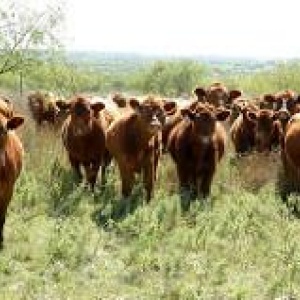
As methane produced by ruminants is a potent greenhouse gas (GHG), many researchers and organisations have pointed to the necessity of reducing ruminant stocks around the world. In this study, the authors argue that with the right crop and grazing management, ruminants might not only reduce overall GHG emissions, but could, in fact, facilitate increases in soil carbon, and reduce environmental damage related to current cropping practices.
The researchers aim to provide an analysis of the cost-benefit trade-offs between livestock and arable crop production within the context of whole agroecosystems. They compare the magnitude of GHG emissions from several key agricultural components and calculate potential GHG emissions from North America for different scenarios involving different balances of cropping and carefully managed grazing land.
An emphasis of the study is on the large quantity of carbon emissions resulting from soil erosion associated with intensive arable cropping practices such as tillage-farming. It finds that the production of domestic ruminants contributes 11.6% (1.58 Gt C y–1) to overall annual GHG emissions, whereas soil erosion-associated losses make up 7.4% (1 Gt C y–1). Based on a small set of peer-reviewed articles, the authors propose that the majority of GHG emissions of many current tillage-based cropping and feedlot-based livestock production systems can be avoided, and even reversed, by ecologically sensitive management of ruminants in mixed crop and grazing agroecosystems through increased carbon sequestration as well as changes in cropping practice. They note the following additional potential benefits: improved soil nutrient cycling, increased soil stability, enhanced watershed function, increased production of healthy food, and enhanced biodiversity and wildlife habitat.
The authors base their calculations on studies which show that ‘conservation grazing’ or ‘adaptive multi-paddock (AMP) grazing management’ techniques can create C negative budgets (between –2 and –4 t C ha–1 y–1), with more C entering the soil than is emitted indirectly or via ruminant emissions.
What the authors fail to mention is 1) the commercial, spatial, and institutional feasibility of such dramatically different production systems, and 2) the reliability and widespread applicability of the few studies on carbon sequestration through special grazing management on which their work is based.
Abstract
Owing to the methane (CH4) produced by rumen fermentation, ruminants are a source of greenhouse gas (GHG) and are perceived as a problem. We propose that with appropriate regenerative crop and grazing management, ruminants not only reduce overall GHG emissions, but also facilitate provision of essential ecosystem services, increase soil carbon (C) sequestration, and reduce environmental damage. We tested our hypothesis by examining biophysical impacts and the magnitude of all GHG emissions from key agricultural production activities, including comparisons of arable- and pastoral-based agroecosystems. Our assessment shows that globally, GHG emissions from domestic ruminants represent 11.6% (1.58 Gt C y–1) of total anthropogenic emissions, while cropping and soil-associated emissions contribute 13.7% (1.86 Gt C y–1). The primary source is soil erosion (1 Gt C y–1), which in the United States alone is estimated at 1.72 Gt of soil y–1. Permanent cover of forage plants is highly effective in reducing soil erosion, and ruminants consuming only grazed forages under appropriate management result in more C sequestration than emissions. Incorporating forages and ruminants into regeneratively managed agroecosystems can elevate soil organic C, improve soil ecological function by minimizing the damage of tillage and inorganic fertilizers and biocides, and enhance biodiversity and wildlife habitat. We conclude that to ensure long-term sustainability and ecological resilience of agroecosystems, agricultural production should be guided by policies and regenerative management protocols that include ruminant grazing. Collectively, conservation agriculture supports ecologically healthy, resilient agroecosystems and simultaneously mitigates large quantities of anthropogenic GHG emissions.
Citation
Teague, W. R., S. Apfelbaum, R. Lal, U. P. Kreuter, J. Rowntree, C. A. Davies, R. Conser et al. (2016) The role of ruminants in reducing agriculture's carbon footprint in North America. Journal of Soil and Water Conservation 71, no. 2 : 156-164.
Read the full paper here (open access).
The FCRN is currently leading a project which is trying to assess the state of evidence in this complex debate around ruminants, grazing systems and soil carbon sequestration. The project is due to report by the end of 2016.
You can read related research by browsing the following categories of our research library: Land; Climate change mitigation, and through the keyword categories: Ecosystems & ecosystem services; Grazing & land use, Grassland; Agroforestry/silvopasture; GHG impacts & mitigation; Ruminants.







Post a new comment »